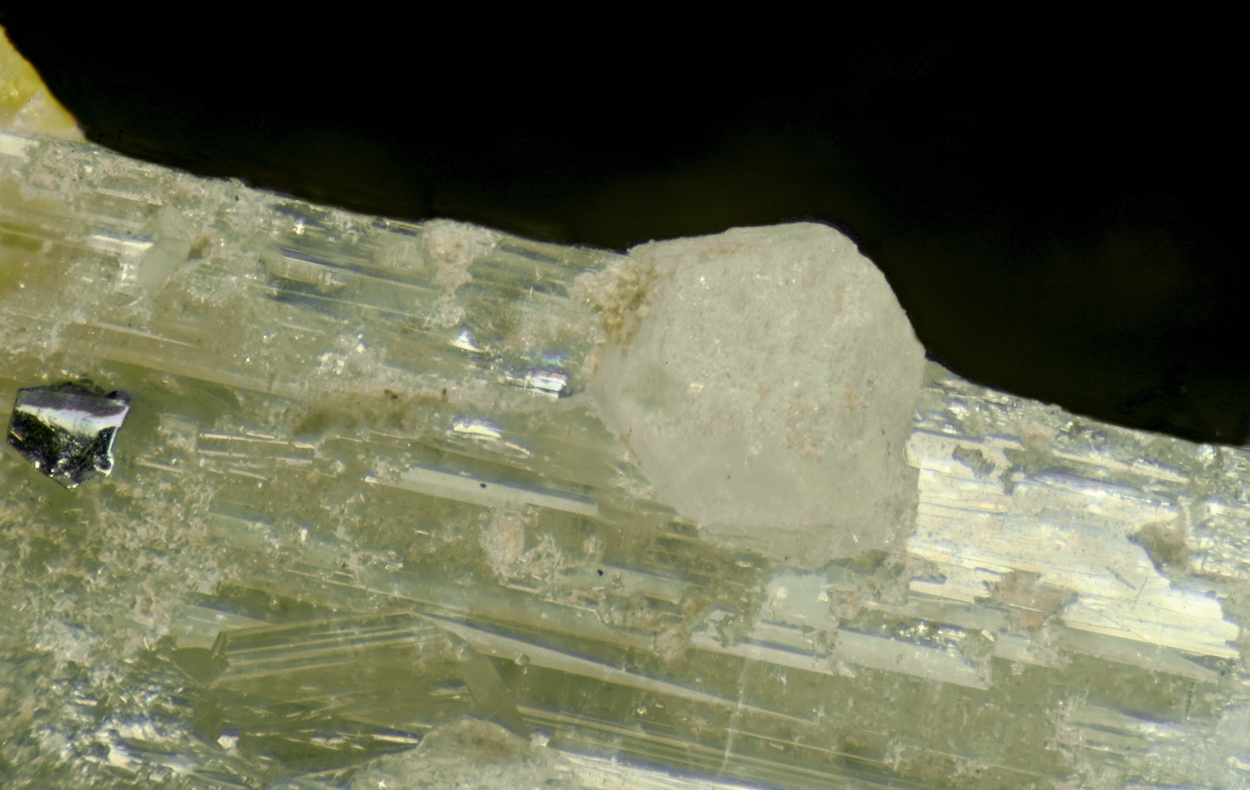This lot consists of two rare minerals, hibschite (on pectolite) and
This lot consists of two rare minerals, hibschite (on pectolite) and ferroceladonite. The dimensions given are for for the hibschite specimen. The ferroceladonite specimen is 2.6 x 1.5 x 5.0 cm and weighs ca 28 g.
According to the IMA, hibschite is now considered to be a variety of grossular, which is of course not a rare mineral. But both grossular and its variety hibschite are rare at MSH. Ferroceladonite can be locally abundant at MSH when found, but it is not found very often. Worldwide, it is quite rare.
The first photo shows a dodecahedral hibschite crystal 1 mm in diameter. More commonly, hibschite at MSH is octahedral with pronounced stepped growth. This specimen was identified at the ROM, and at least one similar sample (from a different find) produced a “garnet structure” XRD pattern.
This same crystal is also shown in the next pair of photos (FOV 3.7 x 2.3 mm), which emphasize the glassines of the underlaying pectolite.
The hibschite sits on a pale greenish pectolite crystal. This crystal is partial (the back is a cleavage). But there are a few samller euhedral crystals, The largest of these (7.2 mm) is shown in the next three photos. It is actually colorless, glassy, and transparent, with a frosted termination. The full-view macro photo shows these attributes more clearly. In the center of this photo, there are also some pale tan mica plates. They are not much to look at, but they are probably taenolite rather than polylithionite. There are also some very tiny molybdenite plates. (A bent one, ca 1/3 mm, can be seen at the bottom of the first pair of photos.)
The ferroceladonite specimen is not large, but it has some very densely packed areas, as shown in the last two close-up photos (FOV 6.2 x 4.4 mm). In parts of the cavity, one can see small (ca 0.6 mm) crystals of albite and siderite, but in other parts, these are almost completely buried in ferroceladonite. Much more commonly, ferroceladonite is found as just a thin coating.
Combined shipping weight 4.0 oz (small box, no case for the ferroceladonite). For non-USA destinations, up to a total weight of 8 oz (225 g), this could be combined with other items for the same postage.
Within the USA, each additional ounce costs about $0.20. For a total weight of 13oz to 16 oz, I will use “own box” Priority mail. The cost (including packing) is ca $9.25 – varies by destination.
































